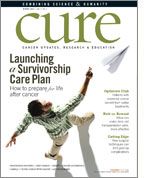Publication
Article
CURE
National Marrow Donor Program
Author(s):
Read about the National Marrow Donor Program.
The nonprofit, Minneapolis-based National Marrow Donor Program (NMDP) operates the Be The Match Registry, the world’s largest hematopoietic stem cell registry, with more than 10 million potential donors and about 165,000 cord blood units.
The NMDP acts as a global hub to connect donor centers, collection and apheresis centers, transplantation centers, laboratories and repositories to facilitate transplantations. Since its inception in 1987, the NMDP has coordinated more than 50,000 transplantations.
Aside from operating the Be The Match Registry, the NMDP serves a number of other functions, including the conduct and support of research through the Center for International Blood and Marrow Transplant Research, and the education and support of physicians, donors and patients regarding the transplantation process.
Although many potential donors fear the pain associated with hematopoietic stem cell donation, the fact is that approximately 80 percent of all adult donations are now taken from blood rather than from bone marrow. Similar to blood donation, a donor’s blood is removed from one arm, but rather than the blood being transferred to a bag, it is pumped into a pheresis machine, which harvests only the hematopoietic stem cells and returns the rest of the blood to the body via a line in the other arm.
For five days prior to donation, donors receive injections of Neupogen (filgrastim) or Mozobil (plerixafor), drugs that increase the number of hematopoietic stem cells circulating in the bloodstream. These drugs may cause headaches, bone or muscle aches, bloating, nausea and dizziness, but these effects disappear shortly after donation. Most donors are back to their normal routine in one to two days.
For those donating bone marrow, liquid marrow is removed from the back of the pelvic bone (hip) during an outpatient surgical procedure. Only 5 percent or less of a donor’s marrow is removed, so the donor’s immune system is not significantly weakened during the four to six weeks necessary to recover the body’s stem cell supply. Because donors receive anesthesia, no pain is felt during the donation, although they can expect to feel a lower backache for a few days or more after donation. Most marrow donors are back to their normal routine in a week or less.
Interested adults can join the Be The Match Registry online (marrow.org) or in person at a donation drive or recruitment center. In either case, donors must confirm that they meet basic registry guidelines (including being under age 60 and free of certain diseases) and submit a swab of cheek cells that will be used to determine tissue type needed for matching.






